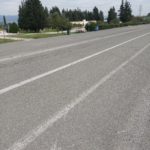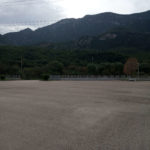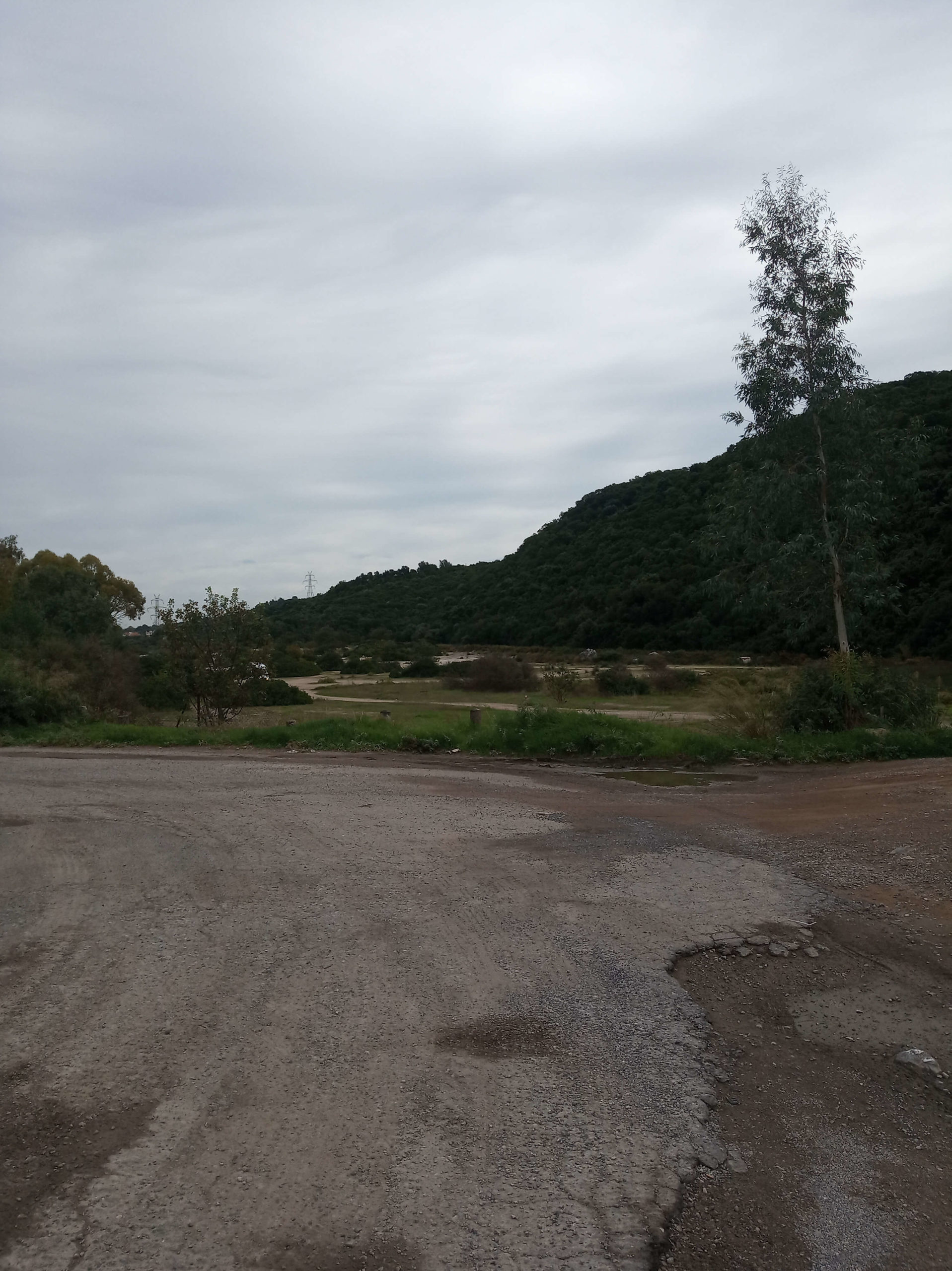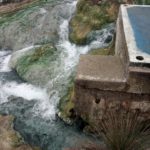Delphi and Thermopylae are two iconic locations in Greece, known for their rich history. Many travelers are curious about the distance between the two sites and how to plan their visit accordingly. Let’s delve into the details and discover how far Delphi is from Thermopylae.
Key Takeaways:
- Delphi and Thermopylae are famous historical sites in Greece.
- Travelers often wonder about the distance between Delphi and Thermopylae.
- Exploring Greece’s rich history and planning a visit to these iconic locations can be a rewarding experience.
- Transportation options, such as buses and taxis, are available for traveling from Delphi to Thermopylae.
- Both Delphi and Thermopylae hold immense historical significance and offer unique insights into ancient Greece.
Delphi to Lamia: Exploring Central Greece
When planning your journey from Delphi to Thermopylae, the first step is to reach the town of Lamia in central Greece. Luckily, buses provide a convenient mode of transportation for this leg of your trip. You can easily find bus schedules on popular websites such as AthensGuide and VisitDelphi. However, it’s important to note that there is no morning bus from Delphi to Lamia on Fridays, so plan accordingly.
If you prefer a quicker and more direct route, you can also consider taking a taxi from Lamia to Thermopylae. The journey typically takes around 15 minutes, allowing you to reach your destination in no time. This option may be especially suitable if you’re traveling with a group or have limited time for your visit.
Whichever mode of transportation you choose, be sure to check the bus schedules or arrange for a taxi in advance to ensure a smooth and hassle-free journey from Delphi to Lamia. With transportation sorted, you can focus on immersing yourself in the rich history and captivating landscapes of central Greece.
“The journey from Delphi to Lamia offers a perfect opportunity to explore the heartland of Greece. Whether by bus or taxi, the scenic route allows you to soak in the beauty of the countryside as you make your way from one historic destination to another.” – Travel enthusiast
Discovering Delphi: The Center of the Ancient World
Delphi, located in central Greece, is a captivating destination that offers a glimpse into the ancient world. As the most famous oracle of its time, Delphi holds immense historical significance. At the heart of Delphi lies the impressive Temple of Apollo, where the oracle Pythia would deliver prophecies and guidance to those seeking answers.
Exploring Delphi allows visitors to immerse themselves in the rich history and mythology of ancient Greece. Besides the Temple of Apollo, there are several other remarkable landmarks worth discovering. The Temple of Athena Pronaia, with its iconic Tholos construction, showcases incredible architectural prowess. The Gymnasium, once a training ground for athletes, offers a glimpse into the physical education practices of ancient times.
“Delphi, revered as the most famous oracle of the ancient world, holds immense historical significance.”
The sacred way, a path lined with treasuries and statues, leads visitors to the treasury house of Athenians, a testament to the city-state’s wealth and power. While exploring Delphi, a visit to the Museum of Delphi is a must. Here, visitors can marvel at a collection of remarkable artifacts, including the renowned bronze Charioteer statue, a masterpiece of ancient Greek sculpture.
The Legends of Delphi: Mysteries and Delight
Delphi’s allure extends beyond its historical significance. The stunning natural beauty that surrounds the archaeological site adds to the overall charm. Nestled on the slopes of Mount Parnassus, Delphi offers breathtaking views of the surrounding landscape, creating a serene and awe-inspiring atmosphere.
- The Temple of Apollo: A testament to ancient Greek religious practices.
- The Temple of Athena Pronaia: A marvel of ancient architecture.
- The Gymnasium: A glimpse into the lives of ancient Greek athletes.
- The sacred way: Connecting visitors to the treasury house of Athenians.
- The Museum of Delphi: Home to remarkable ancient artifacts.
Visiting Delphi is a journey through time, where ancient legends and historical wonders converge. The site’s mystical ambiance and architectural marvels make it a must-visit destination for history enthusiasts and travelers seeking a deeper understanding of ancient Greece.
| Temple of Apollo | Temple of Athena Pronaia | Gymnasium | Sacred Way | Museum of Delphi |
|---|---|---|---|---|
| Experience ancient Greek religious practices | Marvel at ancient architectural prowess | Discover the lives of ancient Greek athletes | Explore treasuries and statues along the path | Admire remarkable ancient artifacts |
The Historical Significance of Thermopylae
Thermopylae holds a significant place in Greek history, particularly due to the famous battle that took place there. This mountain pass in northern Greece witnessed one of the most renowned clashes between the Persian and Greek forces in 480 BCE. Led by Spartan King Leonidas, a small group of brave Spartans and their Greek allies valiantly defended the narrow pass for three days, defying the massive Persian army.
The battle of Thermopylae became a symbol of courage and resilience, as the Greek forces, although outnumbered, held their ground against overwhelming odds. Their heroic sacrifice left an indelible mark on Greek history and became an inspiration for future generations. The defense of Thermopylae played a crucial role in the larger context of the Persian Wars, a series of conflicts between Greece and Persia, and showcased the unwavering spirit of Spartan warriors.
“The Hot Gates,” as Thermopylae translates to, witnessed a clash of civilizations that still echoes throughout history. The courage and determination displayed by Leonidas and his Spartans continue to inspire us today.”
The battle tactics employed at Thermopylae also highlight the strategic prowess of the Greeks. The Persians relied on their vast numbers and long-range assaults, using archers and cavalry charges. In contrast, the Greek forces, dominated by heavily-armored hoplites, formed a phalanx formation, fighting at close quarters with spears and swords. Exploiting the advantage of the narrow terrain, the Greeks made it difficult for the Persians to effectively utilize their massive army.
Overall, the historical significance of Thermopylae lies not only in the battle itself but also in its symbolic value. It represents the determination of the Greeks to resist foreign oppressors and protect their freedom. The heroic stand at Thermopylae, led by Leonidas and his Spartan warriors, continues to be remembered as a defining moment in Greek history and a testament to the power of courage and sacrifice.
The Battle Tactics and Legacy of Thermopylae
The clash at Thermopylae showcased the contrasting battle tactics of the Persian and Greek forces. The Persians relied on long-range assaults using archers and cavalry charges, while the Greeks, primarily composed of heavily-armored hoplites, employed the phalanx formation. The phalanx formation, with soldiers fighting at close quarters using spears and swords, allowed the Greeks to exploit the advantage of the narrow pass terrain, making it difficult for the Persians to utilize their vast numbers effectively.
The Greek hoplites, known for their discipline and strength, formed a tightly-packed and interlocking shield wall, presenting a formidable defense. This formation allowed them to withstand the Persian attacks and counter with steady, coordinated strikes. Despite their eventual defeat, the Greek resistance at Thermopylae inspired future generations and contributed to the ultimate victory in the Persian Wars.
“Come back with your shield, or on it.” – Spartan saying
The Phalanx Formation
The phalanx formation was a key element of Greek battle tactics and an essential component of their success at Thermopylae. This tightly-packed formation consisted of heavily-armored hoplites, each carrying a large round shield, a spear, and a short sword. The hoplites would align shoulder to shoulder, their shields overlapping to form an impenetrable wall. This formation allowed the Greeks to present a unified front against the enemy and move as a cohesive unit.
The Persian Tactics
The Persians, on the other hand, relied on their numerical superiority and diverse range of troops. Their archers, positioned behind the front lines, unleashed showers of arrows upon the Greek phalanx. The Persian cavalry, swift and agile, aimed to outflank the Greeks and disrupt their formation. While the Persian tactics were initially effective, the narrow pass at Thermopylae limited their ability to maneuver and utilize their full force.
| Persian Forces | Greek Forces |
|---|---|
| Archers | Hoplites |
| Cavalry | Hoplites |
| Immortals | Hoplites |
In summary, the battle tactics employed at Thermopylae by the Persian and Greek forces showcased the contrasting styles of warfare. The Greeks, with their disciplined phalanx formation, held their ground against the Persian onslaught. Although ultimately outnumbered and defeated, their resilient defense left a lasting legacy and served as a symbol of courage and determination. The Battle of Thermopylae stands as a testament to the power of strategic thinking, unity, and the indomitable spirit of the Greek people in the face of overwhelming odds.
The Importance of Thermopylae in Greek History
The Battle of Thermopylae holds immense historical significance in Greek history. It was a pivotal moment during the Persian invasion of Greece, led by King Xerxes of Persia. The invasion aimed to conquer and subjugate the rebellious Greek city-states, expanding Persian rule further into Europe. However, Thermopylae stood as a formidable barrier that the Persian forces had to breach in order to advance.
The defense of Thermopylae by the Greeks played a crucial role in the overall defense strategy. Led by the Spartan King Leonidas, the Greek forces valiantly resisted the much larger Persian army for three days. Their unwavering spirit and courage bought valuable time for the other Greek forces to regroup and prepare for subsequent battles, such as the naval Battle of Salamis and the land Battle of Plataea.
“Thermopylae became a symbol of Greek valor and the indomitable spirit of resistance against oppressors.”
The heroic sacrifice of King Leonidas and his small force left an indelible mark on Greek history and became a symbol of Greek valor and the indomitable spirit of resistance against oppressors. The story of Thermopylae continues to inspire and captivate people from all around the world. It serves as a reminder of the importance of defending one’s homeland, even in the face of insurmountable odds.
| Event | Date | Historical Significance |
|---|---|---|
| Battle of Thermopylae | 480 BCE | Greek forces valiantly defended the pass, buying time for the rest of Greece. |
| Battle of Salamis | 480 BCE | Greek naval victory that halted the Persian advance and shifted the tide of the war. |
| Battle of Plataea | 479 BCE | Decisive Greek victory, ending the Persian threat and securing Greek independence. |
Completing the Journey: Delphi to Thermopylae and Back
Now that you have explored the historical wonders of Delphi and Thermopylae, it’s time to embark on the journey back. But why settle for a mundane return when you can turn it into an adventure-filled sightseeing extravaganza?
As you bid farewell to Thermopylae, consider taking the scenic route through the majestic mountains and lush valleys adorned with olive trees. The picturesque drive offers breathtaking vistas that will leave you in awe of Greece’s natural beauty.
On your way back, make sure to include a stop at Arachova, a charming traditional ski resort village. Nestled on the slopes of Mount Parnassus, this quaint town captivates with its cozy atmosphere and stunning panoramas. Take a leisurely stroll through the streets, admire the traditional architecture, and savor the local cuisine.
As you continue your journey, don’t forget to capture memorable photos of the enchanting landscapes that unfold before you. The combination of historical sites, natural wonders, and scenic routes promises an unforgettable adventure that truly epitomizes the spirit of Greece.
FAQ
How far is Delphi from Thermopylae?
The distance between Delphi and Thermopylae is approximately [insert distance here].
How can I travel from Delphi to Thermopylae?
To travel from Delphi to Thermopylae, you must first reach the town of Lamia. Buses provide a convenient mode of transportation for this journey. The bus schedules can be found on various websites, including AthensGuide and VisitDelphi. Alternatively, you can consider taking a taxi from Lamia to Thermopylae, which is approximately a 15-minute ride.
What are the main attractions in Delphi?
Delphi is revered as the most famous oracle of the ancient world. The primary attraction is the Temple of Apollo, where the oracle Pythia would foretell the future. Visitors can also explore other notable landmarks such as the Temple of Athena Pronaia, the Gymnasium, the sacred way, and the treasury house of Athenians. The Museum of Delphi houses remarkable artifacts, including the renowned bronze Charioteer statue.
What is the historical significance of Thermopylae?
Thermopylae is a mountain pass in northern Greece that witnessed several battles, most notably the clash between the Persian and Greek forces in 480 BCE. The heroic defense led by Spartan King Leonidas left an indelible mark on Greek history and became a symbol of resistance against oppressors.
What battle tactics were used at Thermopylae?
The clash at Thermopylae showcased the contrasting battle tactics of the Persian and Greek forces. The Persians relied on long-range assaults using archers and cavalry charges, while the Greeks, primarily composed of heavily-armored hoplites, employed the phalanx formation and fought at close quarters using spears and swords.
How did the battle of Thermopylae contribute to Greek history?
The battle of Thermopylae played a crucial role in the larger context of the Persian Wars and became a symbol of Greek valor and the unwavering spirit of resistance against oppressors. The brave defense bought valuable time for the other Greek forces to regroup and eventually repel the Persians at the battles of Salamis and Plataea.
How can I complete the journey from Delphi to Thermopylae?
To complete the journey, you can opt for a scenic drive through the mountains and fertile valleys of olive trees. After visiting Thermopylae and exploring its historical significance, the return journey can be made via Arachova, a traditional ski resort village. This route offers stunning views and opportunities for capturing memorable photos. It is essential to plan the itinerary accordingly and make necessary transportation arrangements.
Author Profile
-
Welcome to e-thermopyles.gr, your gateway to the fascinating world of Thermopylae and the legendary Spartans. My name is George Margaritis, and I’m the proud owner and writer behind this website.
A Passion for History and the Spartan Legacy
I consider myself fortunate to call the historic site of Thermopylae my home. From a young age, I was captivated by history, and in particular, the incredible tale of the Battle of Leonidas in Thermopylae. The valiant stand of King Leonidas and his 300 Spartans against overwhelming odds has left an indelible mark on the annals of history.
As I delved deeper into this captivating story, my fascination only grew. The bravery, strategy, and sacrifice of those Spartan warriors resonated with me, and I wanted to share this rich history with the world. That’s why I created e-thermopyles.gr, a platform dedicated to exploring and uncovering the depths of knowledge surrounding Thermopylae and the Spartans.
Latest entries
 HistoryOctober 31, 2023Exploring Why is the Battle of Thermopylae Interesting
HistoryOctober 31, 2023Exploring Why is the Battle of Thermopylae Interesting GuidesOctober 31, 2023Your Guide to the Athens to Thermopylae Train Journey
GuidesOctober 31, 2023Your Guide to the Athens to Thermopylae Train Journey GuidesOctober 31, 2023Uncover the Mystery: Where is Thermopylae Today?
GuidesOctober 31, 2023Uncover the Mystery: Where is Thermopylae Today? GuidesOctober 31, 2023Uncover History by Visiting Thermopylae – A Travel Guide
GuidesOctober 31, 2023Uncover History by Visiting Thermopylae – A Travel Guide






